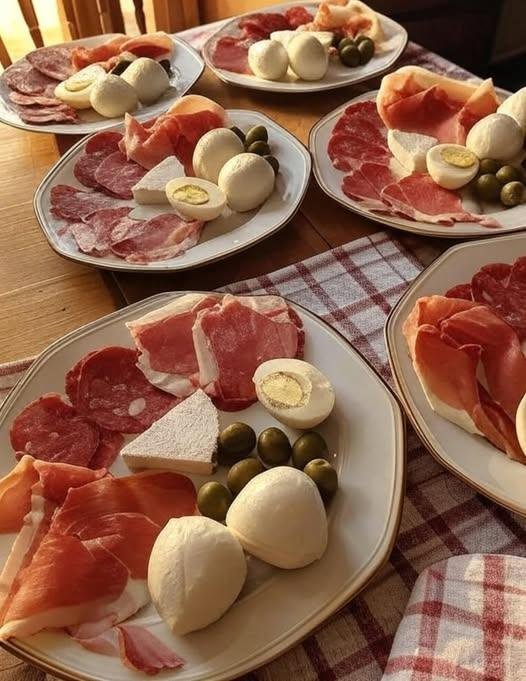Italian antipasto (literally “before the meal”) is the traditional first course of an Italian meal. It’s not just one dish but rather a colorful spread of cured meats, cheeses, marinated vegetables, olives, and sometimes seafood, all designed to awaken the appetite before the main courses.
Common Elements of an Antipasto Platter:
-
Cured Meats (Salumi): Prosciutto, salami, mortadella, bresaola, soppressata.
-
Cheeses: Fresh mozzarella, provolone, Parmigiano-Reggiano chunks, pecorino, or gorgonzola.
-
Vegetables: Roasted peppers, grilled zucchini or eggplant, artichoke hearts, sun-dried tomatoes, marinated mushrooms.
-
Briny & Pickled Items: Olives (green, black, or stuffed), giardiniera (pickled vegetables), capers.
-
Seafood (optional, depending on region): Anchovies, marinated sardines, or shrimp.
-
Bread: Crusty Italian bread, grissini (breadsticks), or focaccia for pairing.
Regional Variations:
-
Northern Italy: Often features more cheeses, butter-based items, and cured meats like speck.
-
Southern Italy: More emphasis on vegetables, olives, capers, and seafood.
-
Sicily: May include tuna, swordfish, or eggplant caponata.
Presentation:
Antipasto is usually arranged beautifully on a large platter or board, with contrasting colors and textures. It’s meant for sharing, encouraging guests to pick and choose small bites.
